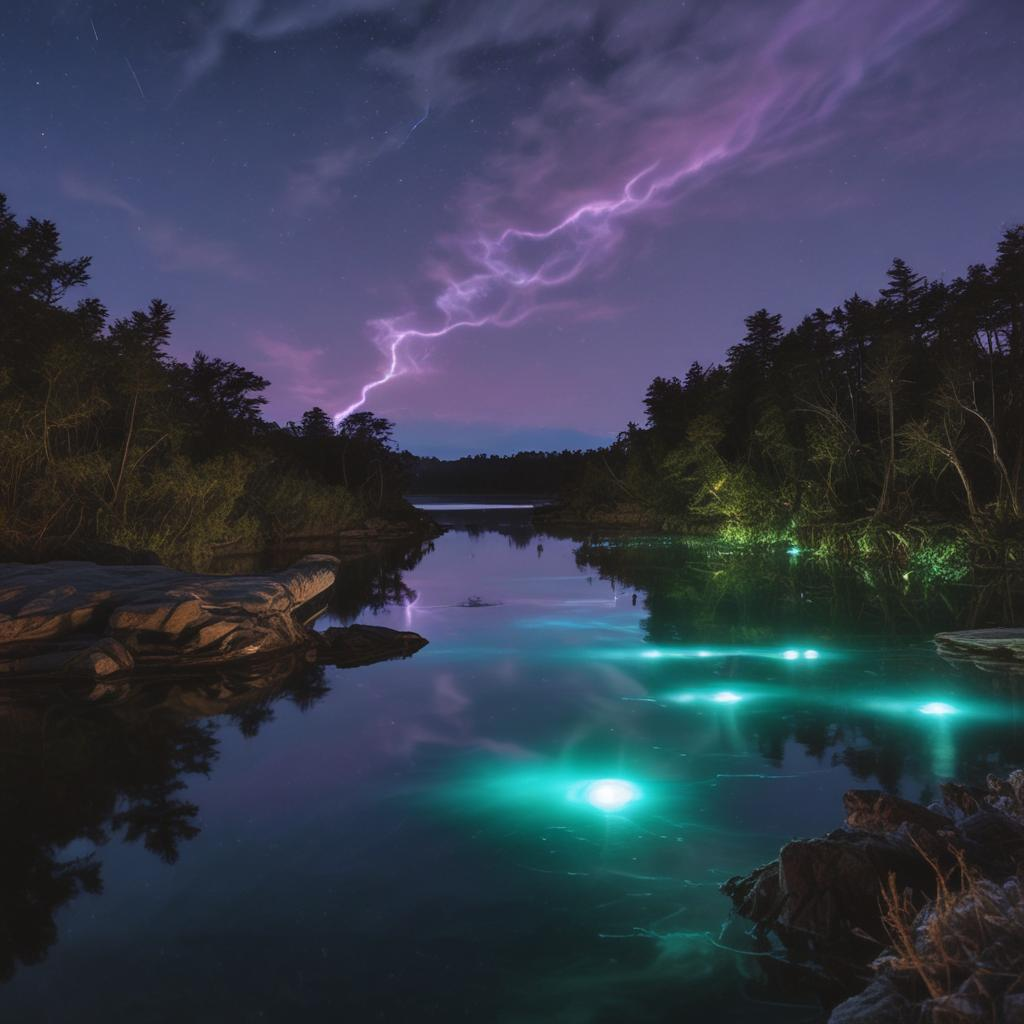Introduction to Bioluminescence and Its Organisms
Bioluminescence is a fascinating natural phenomenon exhibited by various organisms, from deep-sea fish to fireflies. This feature enables them to produce light through a chemical reaction within their bodies. While it is a spectacle that inspires wonder, several bioluminescent species are under threat due to human activities and environmental changes. Understanding the conservation needs and threats faced by these organisms is crucial for their preservation and the maintenance of ecological balance.

Conservation of Bioluminescent Organisms: Top 10 Points
- Awareness and Education
Educating the public about the uniqueness and ecological roles of bioluminescent organisms is the first step towards their conservation. Awareness programs can help reduce human impact and foster a community interested in protecting these species through respectful interaction and eco-friendly practices.
- Habitat Protection
Habitats housing bioluminescent organisms, such as marine environments and certain terrestrial ecosystems, must be protected. Establishing Marine Protected Areas (MPAs) and nature reserves are essential to ensure these organisms can thrive without disturbance from urban development, pollution, and other environmental stressors.
- Research and Monitoring.p>Continuous research and monitoring to gather more information on bioluminescent species are vital. Scientific studies help in understanding their life cycles, behaviors, and interactions with their environments, which in turn helps in making informed conservation decisions.
Reduction in Pollution
Environmental pollution, particularly light pollution and chemical pollutants, can significantly affect bioluminescent organisms. Light pollution disrupts natural light patterns essential for the behavior of these species, while chemical pollutants can be toxic and cause physiological stresses.
- Regulation of Tourism.p>Areas known for their bioluminescent bays or coasts attract considerable tourist attention. While this can benefit local economies, it can also lead to habitat degradation if not managed properly. Implementing sustainable tourism practices and visitor education can mitigate these impacts.
- Legislation and Policy Making.p>Strong legislative measures must be enacted to protect bioluminescent organisms directly. These laws can regulate fishing practices, pollution, and land use in sensitive areas, helping to conserve these light-emitting species and their habitats.
- Community Involvement.p>The involvement of local communities in the conservation processes ensures sustainable conservation practices. Locals can act as stewards of the ecosystem, participating in habitat restoration projects and monitoring activities that contribute to the protection of bioluminescent species.
- Advanced Technological Applications.p>Leveraging technology can aid significantly in the conservation of bioluminescent organisms. Remote sensing, tracking devices, and other innovative technologies can help scientists monitor populations and ecological changes without intrusive methods that might harm these delicate organisms.
- Addressing Climate Change.p>Global warming and climate change have profound impacts on marine and terrestrial ecosystems. It is crucial to address these broader issues as they affect sea temperatures, ocean acidification, and other elements critical to the survival of bioluminescent organisms.
- Collaborations and Partnerships.p>Strengthening international and cross-institutional collaborations can enhance conservation efforts for bioluminescent species. Sharing knowledge, resources, and management strategies across borders can lead to more effective and wide-reaching conservation outcomes.
Threats to Bioluminescent Organisms
Despite their enchanting beauty and ecological importance, bioluminescent organisms face several threats that jeopardize their survival:
- Habitat Destruction
The most significant threat is the destruction of natural habitats. For marine bioluminescent organisms, coastal development, bottom trawling, and various forms of pollution are major destructive forces. For terrestrial species like fireflies, urban sprawl and industrial agriculture practices that lead to habitat fragmentation are just as detrimental.
- Climate Change
Changes in climate patterns affect sea temperatures and weather conditions, impacting marine and terrestrial bioluminescent species. Ocean acidification, a result of increased CO2 levels, particularly affects marine life, altering their habitats and reducing their ability to produce light.
- Overexploitation.p>In some regions, bioluminescent organisms are harvested for their luminous properties, which are used in decoration and novelty items. Overfishing and overcollecting of these species can lead to significant declines in their populations.
- Pollution
Chemical pollutants from industrial runoff, agricultural pesticides, and untreated sewage can accumulate in the ecosystems of bioluminescent organisms, poisoning them and reducing their light-emitting capabilities. Light pollution, particularly in coastal and urban areas, also severely disrupts the natural behaviors of light-producing species.
- Invasive Species
The introduction of invasive species to ecosystems can disrupt the natural balance and directly compete with native bioluminescent species for resources, or introduce new diseases to which they have no defense.
Conclusion
The conservation of bioluminescent organisms is not only crucial for maintaining the biodiversity of our planet but also for preserving the natural beauty and wonder they bring to the environment. By addressing the threats they face and implementing sustainable conservation strategies, we can help ensure that future generations will also be able to enjoy and learn from these luminous beings.
- Habitat Destruction


.jpg)






.jpg)



0 Comments